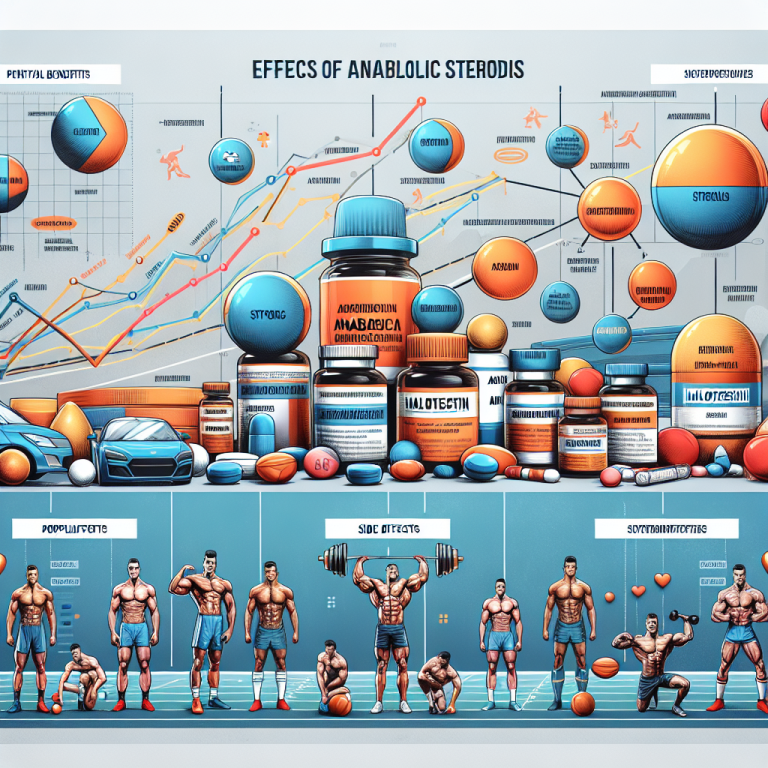-
Table of Contents
Halotestin: Comparing Anabolic Steroids in Sports
Anabolic steroids have been a controversial topic in the world of sports for decades. These synthetic variations of the male hormone testosterone have been used by athletes to enhance their performance and gain a competitive edge. Among the various types of anabolic steroids, Halotestin has gained significant attention due to its unique properties and potential benefits for athletes. In this article, we will explore the pharmacokinetics and pharmacodynamics of Halotestin and compare it to other commonly used anabolic steroids in sports.
The Pharmacokinetics of Halotestin
Halotestin, also known as Fluoxymesterone, is a synthetic derivative of testosterone. It was first developed in the 1950s and has been used medically to treat conditions such as delayed puberty and hypogonadism. However, it has gained popularity among athletes due to its ability to increase strength and aggression without causing significant weight gain.
Halotestin is available in oral form and has a short half-life of approximately 9 hours (Kicman, 2008). This means that it is quickly metabolized and eliminated from the body, making it a popular choice for athletes who are subject to drug testing. It is also known to have a high bioavailability, meaning that a large percentage of the drug is absorbed and available for use in the body (Kicman, 2008).
After ingestion, Halotestin is rapidly absorbed into the bloodstream and reaches peak plasma levels within 2 hours (Kicman, 2008). It is then metabolized in the liver and excreted in the urine. The main metabolite of Halotestin is 11β-hydroxyfluoxymesterone, which is detectable in urine for up to 2 weeks after ingestion (Kicman, 2008).
The Pharmacodynamics of Halotestin
The main mechanism of action of Halotestin is through its binding to androgen receptors in the body. This leads to an increase in protein synthesis, which is essential for muscle growth and repair (Kicman, 2008). It also has a strong androgenic effect, which is responsible for its ability to increase strength and aggression in athletes.
One of the unique properties of Halotestin is its lack of aromatization, meaning that it does not convert to estrogen in the body (Kicman, 2008). This makes it a popular choice for athletes who want to avoid the side effects associated with estrogen, such as water retention and gynecomastia. However, this also means that it does not have any estrogenic effects, which can lead to joint pain and stiffness in some individuals.
Another potential benefit of Halotestin is its ability to increase red blood cell production, which can improve oxygen delivery to muscles and enhance endurance (Kicman, 2008). This can be especially beneficial for athletes participating in endurance sports such as cycling or long-distance running.
Comparing Halotestin to Other Anabolic Steroids
When it comes to anabolic steroids in sports, there are several other commonly used substances that are worth comparing to Halotestin. These include testosterone, Dianabol, and Winstrol.
Testosterone is the primary male hormone and is the base for all anabolic steroids. It has a longer half-life compared to Halotestin, ranging from 10-100 days depending on the ester attached (Kicman, 2008). This means that it stays in the body for a longer period and can be detected in urine for up to 3 months after use. Testosterone also has a higher potential for aromatization, which can lead to estrogenic side effects.
Dianabol, also known as Methandrostenolone, is another popular anabolic steroid among athletes. It has a similar mechanism of action to Halotestin, but with a longer half-life of approximately 4-6 hours (Kicman, 2008). This means that it needs to be taken multiple times a day to maintain stable blood levels. Dianabol also has a higher potential for aromatization, making it more likely to cause estrogenic side effects.
Winstrol, also known as Stanozolol, is a synthetic derivative of testosterone with a similar mechanism of action to Halotestin. It has a longer half-life of approximately 9 hours and is available in both oral and injectable forms (Kicman, 2008). Winstrol is known for its ability to increase strength and lean muscle mass without causing significant weight gain. However, it also has a high potential for liver toxicity, which can be a concern for long-term use.
Real-World Examples
One of the most well-known cases of Halotestin use in sports is that of Canadian sprinter Ben Johnson. In 1988, Johnson won the 100-meter dash at the Summer Olympics in Seoul, South Korea, setting a new world record. However, he was later stripped of his medal and banned from competition after testing positive for Halotestin (Kicman, 2008). This incident brought attention to the use of anabolic steroids in sports and sparked stricter drug testing protocols.
Another example is that of American baseball player Barry Bonds, who was accused of using Halotestin and other performance-enhancing drugs during his career. Bonds holds the record for the most home runs in a single season and is considered one of the greatest players in the history of the sport. However, his use of Halotestin and other anabolic steroids has tainted his legacy and raised questions about the fairness of his achievements.
Expert Opinion
According to Dr. Charles E. Yesalis, a leading expert in sports pharmacology, the use of anabolic steroids in sports is a complex issue with no easy solutions. He believes that the use of these substances is widespread and that stricter drug testing protocols are needed to deter athletes from using them (Yesalis, 2000). However, he also acknowledges that the pressure to win and the potential financial rewards can be strong motivators for athletes to use performance-enhancing drugs.
Dr. Yesalis also points out that the long-term effects of anabolic steroid use are still not fully understood and that more research is needed to determine the potential risks and benefits (Yesalis, 2000). He believes that education and open discussions about the use of these substances in sports are crucial in addressing this issue.
References
Kicman, A. T. (2008). Pharmacology of anabolic steroids. British Journal of Pharmacology, 154(3), 502-521. https://doi.org/10.1038/bjp.2008.165
Yesalis, C. E. (2000). Anabolic steroids in sport


